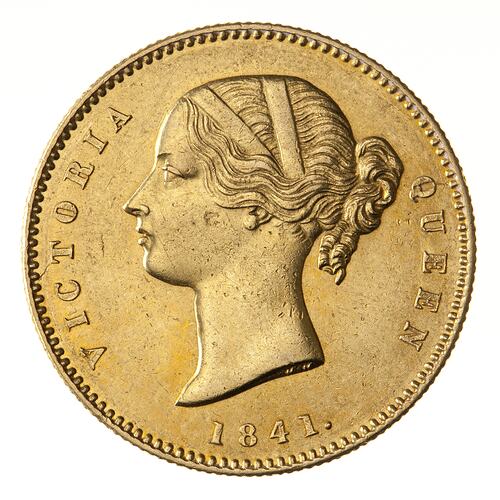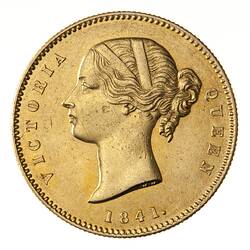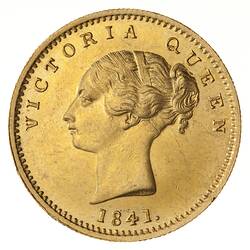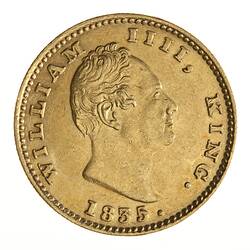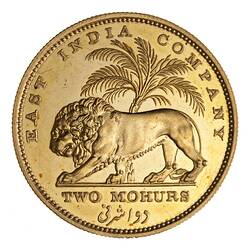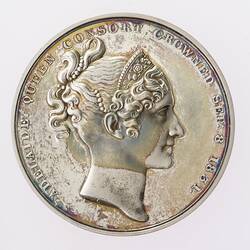Summary
1 Mohur, 1841
Issued by East India Company, India, 1850-1860s
Minted by Calcutta Mint
Type II, introduced in 1850 with the date 1841 frozen
Obverse Description
Head of the Queen facing left; around (divided), VICTORIA QUEEN 1841.; incuse on neck truncation, W.W.
Reverse Description
A lion advancing to left in front of a palm tree; around above, EAST INDIA COMPANY; in exergue, ONE MOHUR and a line in Persian script (yek ashrafi; translation: one mohur)
Edge Description
Milled (vertical)
Significance
This, type 2, gold mohur continues the tradition of its predecessor (the type 1, continuous legend obverse which also bore the frozen date 1841). Introduced in 1851, the new coins were not legal tender. Legal tender was the silver rupee, the value of the gold mohur in rupees varied with the relative market prices of gold and silver. However, from 13 January 1841 Treasuries had been ordered to accept the mohur at the original 1835 fixed rate of 15 rupees. The discoveries of gold in Australia
however soon led to speculation with people bringing gold to the mint to profit from the fixed official rate of 15 rupees. Millions of rupees worth of gold mohurs accumulated in the Treasury resulting in a decision that from 1 January 1853 the government would not accept their own gold coins 'on acount of payment due'.
Government of India passed to the British Crown in 1858 but no new legislation related to the production of gold coins was enacted until 1866, the old East India Company Acts remained in force. It is highly possible that the frozen date (1841) type 2 mohur remained in production until 1866 when it was replaced by the Imperial Series frozen (1862 dated) issue.
More Information
-
Collecting Areas
-
Acquisition Information
Transfer from Melbourne Branch of Royal Mint, 1978
-
Date Issued
1841 AD
-
Issued By
-
Mint
-
Artist
-
Denomination
-
Series
-
Material
Gold
-
Axis
12
-
Classification
-
Category
-
Discipline
-
Type of item
-
Dimensions
26 mm (Outside Diameter), 11.63 g (Weight)
-
Shape
Round
-
References
Pridmore 20.1 KM#462.3
[Book] Bruce, Colin R. 2006. Standard Catalogue of World Coins 1801 - 1900.
[Book] Pridmore, Fred. 1975. The Coins of the British Commonwealth of Nations, Part 4, India. 1., Vol.2 p. 26, p.102 Pages
-
Keywords
British Commonwealth Coins, British Commonwealth and Empire Coins
